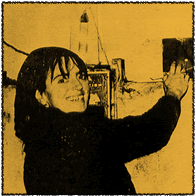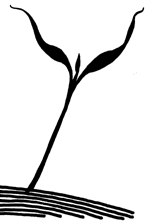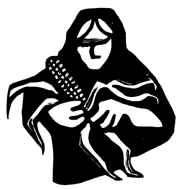![]()
 For 20 years an extraordinary artist-activist named Rini Templeton drew struggles of grassroots people in the United States, Mexico and Central America. She made thousands of drawings, didn't sign them and gave them away freely, so her name remains unknown while her work is widely known, used and loved.
For 20 years an extraordinary artist-activist named Rini Templeton drew struggles of grassroots people in the United States, Mexico and Central America. She made thousands of drawings, didn't sign them and gave them away freely, so her name remains unknown while her work is widely known, used and loved.
Born in Buffalo, New York, Rini's creativity showed itself at an early age. When only 10, her poem about the end of World War II was published in a major daily newspaper in Washington, D.C. and she built her own photography darkroom at age 13. Later Rini studied at the University of Chicago, traveled in Europe and became a sculptor. After living for two years in New Mexico, she studied printmaking in Mexico and was in Havana with a group of students when the Cuban revolution triumphed on Jan. 1, 1959.
 She lived from 1961-64 in Cuba, where she worked in the Literacy Campaign, cut sugar-cane, and founded the Havana Cathedral Printmaking Workshop. On a return trip to the U.S., she was denied entry and finally re-admitted under orders not to teach or speak about Cuba or in favor of the revolution.
She lived from 1961-64 in Cuba, where she worked in the Literacy Campaign, cut sugar-cane, and founded the Havana Cathedral Printmaking Workshop. On a return trip to the U.S., she was denied entry and finally re-admitted under orders not to teach or speak about Cuba or in favor of the revolution.
Rini settled in Taos, N.M. and worked there as an artist as well as for the Chicano movement, including the newspaper El Grito del Norte (edited by Betita Martinez). She had many shows of her drawings and sculpture, and did a portfolio to support the Chilean people after the Sept. 11, 1973 military coup against President Allende. In 1974 she moved to Mexico City and joined the Taller de la Gráfica Popular, having decided to devote herself to graphic work as the most accessible form of support for popular struggles.
Her tireless work for peoples struggles went on. Traveling all over Mexico, during return trips to the U.S., and on visits to Nicaragua where she trained people to produce educational materials for the Sandinistas, Rini made drawings of people in struggle. It could be a workers' strike, a community struggle to save a school or hospital, peasants battling for the land, a celebration of International Women's Day, or a march for peace. She told people she did "xerox art," meaning they could freely photocopy drawings they found useful to put on flyers, pamphlets, banners, picket signs, T-shirts, anything to support their work.
 When devastating earthquakes hit Mexico City in 1985, she went to work organizing not just aid to victims but grassroots efforts to demand the government build new housing. The following year, Rini died alone of unknown causes, possibly a stroke or heart attack, in her one-room home on a rooftop in Mexico City.
When devastating earthquakes hit Mexico City in 1985, she went to work organizing not just aid to victims but grassroots efforts to demand the government build new housing. The following year, Rini died alone of unknown causes, possibly a stroke or heart attack, in her one-room home on a rooftop in Mexico City.
Since then, her drawings have been used thousands of times by different movements and grassroots organizations. The bilingual book The Art of Rini Templeton: Where There is Life and Struggle/El Arte de Rini Templeton: Donde hay vida y lucha was published in 1989 by the Real Comet Press in Seattle, Washington and in Mexico City, with many of her drawings as well as "Remembrances of Rini" by those who knew her and a detailed chronology of her life.
This web-site has been established to continue the tradition of making her work easily available to activists serving causes that she would have supported.
For permission to use her work for commercial benefit, as on a book cover, please contact:
Rini Templeton Memorial Fund
c/o Martinez
3545 24th Street
San Francisco, CA 94110
Email: inquiries@riniart.org